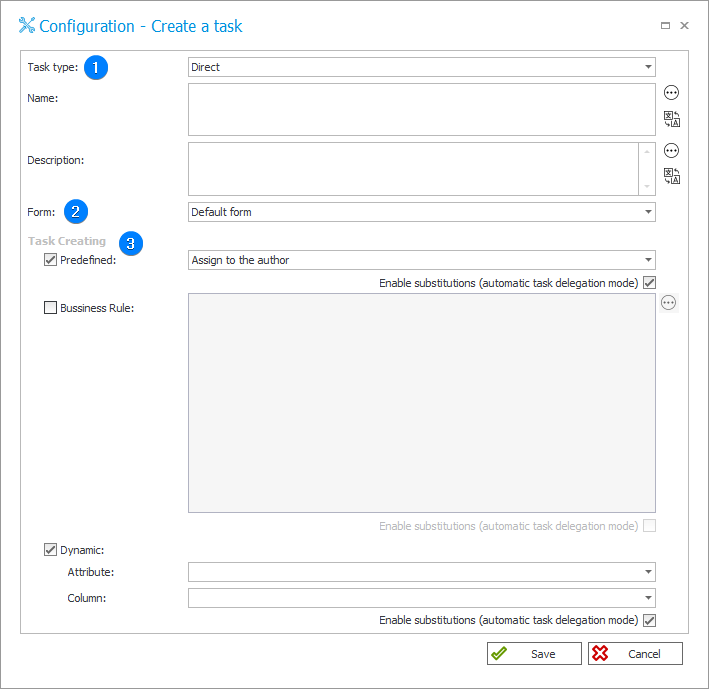Create a task
The action allows you to assign a task to people indicated in the configuration. If the action is defined on entry to the step, there is no need to configure the task creation configuration.
The way the action works is similar to Task creation resulting from the settings on the path.

1. Task type
Select whether the task is to be assigned Directly or as a task to the message (CC).
The Direct task type means that the task is assigned to a user or a user group at the moment of a path transition. In other words, task assignment only occurs when a transition context is present—such as when a user clicks a path transition button or a transition is triggered automatically.
As a result, Direct tasks are not available in contexts that do not involve a transition, such as automations triggered Upon instance saving. They can be used in automations triggered On entry, On exit, and On path.
Tasks of this type appear in the user's My tasks list and block the workflow, meaning that the instance will wait until the assigned user performs the required action.
The CC task type is an informational notification about process events. It does not require user interaction and does not block the workflow. The task is visible to assigned users, but no action is expected from them. This task type can be used in any context—including those without path transitions—such as automations triggered Upon instance saving.
When creating an Action template, you can choose any task type. However, using a Direct task type in an inappropriate context (e.g., within an automation triggered Upon instance saving) will result in no task being assigned, because the system lacks the necessary transition context to create it.
2. Form
The action allows you to define a form in which user will receive a task. This is possible by dividing the step into several tasks and displaying only those fields to the user which they will need to execute the task.
3. Task creating
The fields available in this section are the same as those in the standard Task creation tab.
The action contains the task assignment method that is unavailable on the path – Assign to a user whose task has been completed. If the person going through a path does not have a direct task but only replaces the person who has been assigned the task, the task will be created for the replaced person. If the person going through a path has a task on the instance, the task will be created for that person.
For more information on how the action works, along with examples, see the article "Create a task" action on our technical blog.